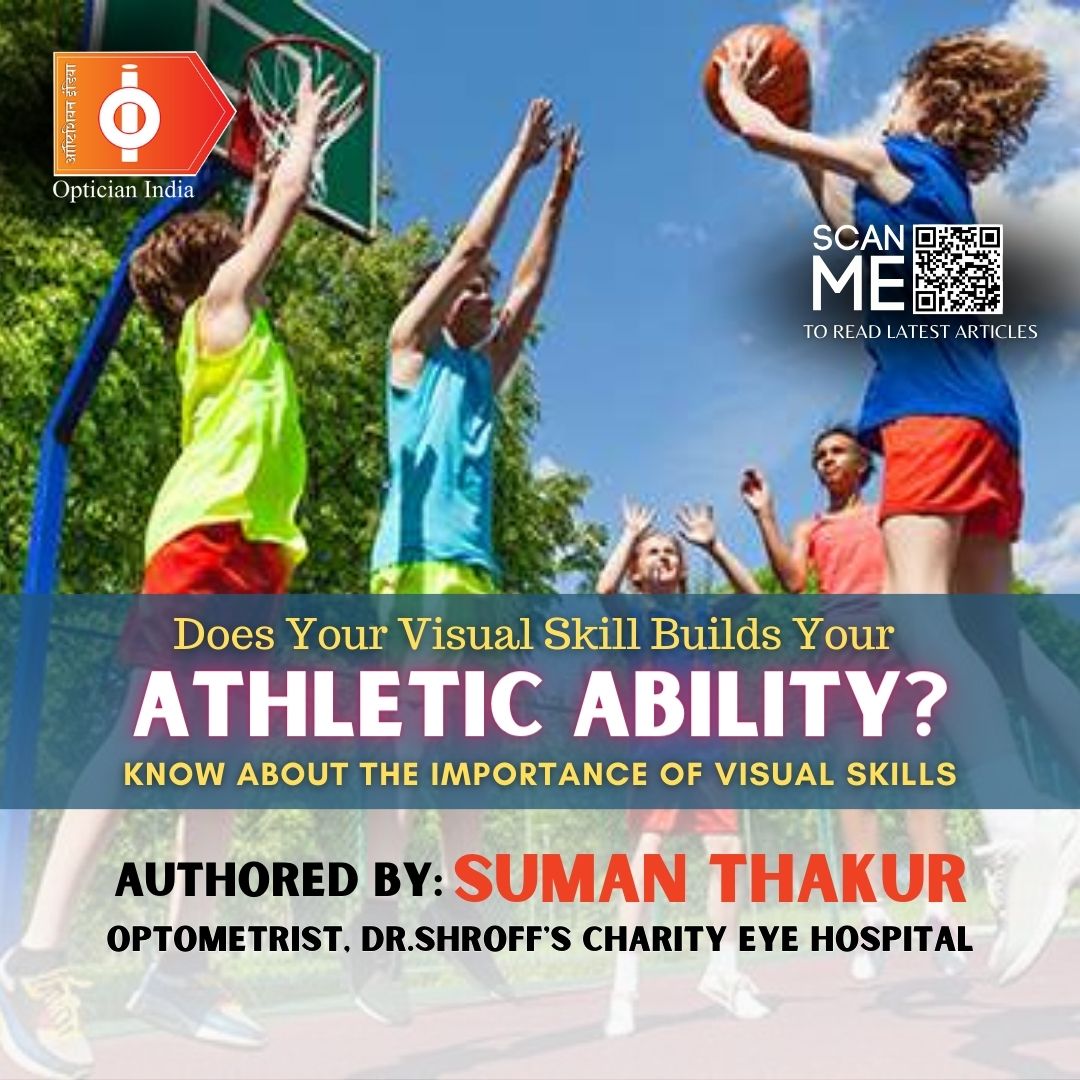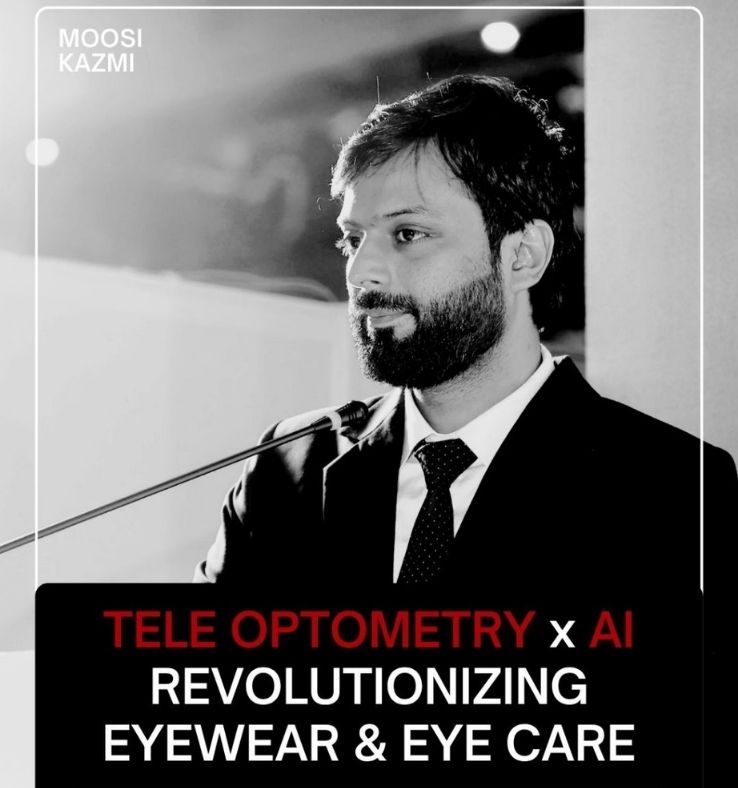Does your visual skill builds your athletic ability?

Vision is not only about how well you can see, it also involves accurate, smooth, and precise eye movements. In sports beside having good vision you must have good visual skills that allows you to visualize, use your peripheral vision, switch visual focus between target points at varying distances, sustain focus on a moving target, and more. Specific sports demand specific visual skills and present new challenges under different situation .It is obvious that vision and sport performance are linked in many ways [1]
Visual skills necessary for sports performance
Sports activities require accuracy and speed for optimal performance. Visual skills are essential to success in sports[2] .Some skills that allow you to participate and perform well are as follows:
1. Dynamic visual acuity: Dynamic visual acuity allows you to see moving objects clearly. This skill is essential for the ability to clearly see the moving object and other players while you and/or the other objects are moving quickly.
2. Eye tracking: Eye tracking allows you to keep your eyes on the ball at all times, without moving your head— enabling the ability to maintain better balance and a faster response to the situation.
3. Eye focusing: Eye focusing allows you to change focus quickly and accurately between two distances (near and far).[3] This skill is essential for playing all types of sports that involve looking at the goal in the distance, while managing and moving around the opponents.
4. Peripheral vision: Peripheral vision allows you to see images, teammate or opponent, “at the edges of vision” while fixating on a target. An essential ability for to see what is going on all around you without turning your head.
5. Depth perception: Depth perception allows you to quickly and accurately judge the speed and distance of objects. This skill is crucial to analyze 3D vision in surrounding [4]andfor not over and under estimating the location of the teammates, opponents, boundary lines and other objects.
6. Visual reaction time : It trains your brain to interpret and react to your teammate’s or opponent’s action, in an appropriately timed manner. This skill helps to scan scene to absorb all the information and react quickly to the situation [5]
7 Eye-hand coordination: Eye-hand coordination allows you to react to incoming visual information with accurate body movements. This skill is essential for sports because it enables accurate timing and control body movements.
8. Visual memory: It allows you to interpret and remember a fast-moving, multi-detailed image, including both people and objects. This skill is essential for sports, specifically for “being in the right place, at the right time”— enabling the visual systems to receive messages accurately or quick enough for accurate performance [6]
9. Visualization: Visualization allows you to imagine yourself succeeding, while at the same time concentrating on something else. This skill is essential for sports as it enables you to visualize different scenarios to prepare for obstacles and opportunities
10. Visual concentration: Visual concentration allows you to maintain focus on an object or target, with the presence of distraction. This skill is essential for sports, specifically in situations when spectators are reacting or cheering around you, or the timer on the scoreboard is approaching the end of the period.
Conclusion
As a sports man if you have difficulty in catching or throwing, struggling to track the ball or other players, over or under estimating distances, trouble in remembering players, not able to concentrate in game, not able to react on proper time you will be having poor sports performance beside strong athletic skills and causing diminished interest in sports.
So if you want to build up your carrier in sports and don’t want to lead to a poor self image you must have good visual skills as it has potential to affects your sports performance [7].
References
1.Griffiths G. Performance, Vision and Sport- A Practitioner’s Guide. Opticians. 2008.
2. Berman A. Starting a sports vision practice. Optometric Management. 1990;25:30−34.
3 .Chen AH, and Abidin AHZ. Vergence and accommodation system in Malay primary school children. Malays J Med Sci. (2002) 9:9. doi: 10.4103/iahs.iahs_5_19
4. Sharma P. The pursuit of stereopsis. J AAPOS. (2018) 22:2.e1–2.e5. doi: 10.1016/j.jaapos.2017.10.009
5. Reina R, Moreno FJ, and Sanz D. Visual behavior and motor responses of novice and experienced wheelchair tennis players relative to the service return. Adapt Phys Activ Q. (2007) 24:254–71. doi: 10.1123/apaq.24.3.254
6. Knudson D, Kluka DA. The impact of vision and vision training on sport performance. JPERD. 1997;68(4):17−24.
7. Erickson G. Sports Vision: Vision Care for the Enhancement of Sports performance. St. Louis, MO. Butterworth-Heinemann Elsevier; 2007

.jpg)

.jpg)
.jpg)
.jpg)


1.jpg)



.jpg)
.jpg)



_(Instagram_Post).jpg)
.jpg)
_(1080_x_1080_px).jpg)


with_UP_Cabinet_Minister_Sh_Nand_Gopal_Gupta_at_OpticsFair_demonstrating_Refraction.jpg)
with_UP_Cabinet_Minister_Sh_Nand_Gopal_Gupta_at_OpticsFair_demonstrating_Refraction_(1).jpg)

.jpg)








.jpg)



.png)




